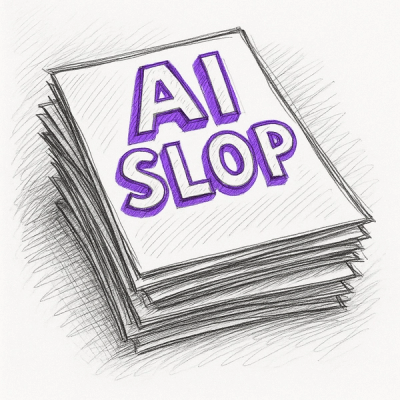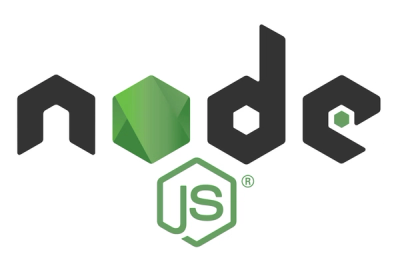
Security News
Django Joins curl in Pushing Back on AI Slop Security Reports
Django has updated its security policies to reject AI-generated vulnerability reports that include fabricated or unverifiable content.
Automated machine learning for production and analytics
|Build Status| |Documentation Status| |PyPI version| |Coverage Status| |license|
pip install auto_ml.. code:: python
from auto_ml import Predictor
from auto_ml.utils import get_boston_dataset
df_train, df_test = get_boston_dataset()
column_descriptions = {
'MEDV': 'output',
'CHAS': 'categorical'
}
ml_predictor = Predictor(type_of_estimator='regressor', column_descriptions=column_descriptions)
ml_predictor.train(df_train)
ml_predictor.score(df_test, df_test.MEDV)
auto_ml is designed for production. Here's an example that includes serializing and loading the trained model, then getting predictions on single dictionaries, roughly the process you'd likely follow to deploy the trained model.
.. code:: python
from auto_ml import Predictor
from auto_ml.utils import get_boston_dataset
from auto_ml.utils_models import load_ml_model
# Load data
df_train, df_test = get_boston_dataset()
# Tell auto_ml which column is 'output'
# Also note columns that aren't purely numerical
# Examples include ['nlp', 'date', 'categorical', 'ignore']
column_descriptions = {
'MEDV': 'output'
, 'CHAS': 'categorical'
}
ml_predictor = Predictor(type_of_estimator='regressor', column_descriptions=column_descriptions)
ml_predictor.train(df_train)
# Score the model on test data
test_score = ml_predictor.score(df_test, df_test.MEDV)
# auto_ml is specifically tuned for running in production
# It can get predictions on an individual row (passed in as a dictionary)
# A single prediction like this takes ~1 millisecond
# Here we will demonstrate saving the trained model, and loading it again
file_name = ml_predictor.save()
trained_model = load_ml_model(file_name)
# .predict and .predict_proba take in either:
# A pandas DataFrame
# A list of dictionaries
# A single dictionary (optimized for speed in production evironments)
predictions = trained_model.predict(df_test)
print(predictions)
auto_ml has all of these awesome libraries integrated! Generally, just
pass one of them in for model_names.
ml_predictor.train(data, model_names=['DeepLearningClassifier'])
Available options are - DeepLearningClassifier and
DeepLearningRegressor - XGBClassifier and XGBRegressor -
LGBMClassifer and LGBMRegressor - CatBoostClassifier and
CatBoostRegressor
All of these projects are ready for production. These projects all have prediction time in the 1 millisecond range for a single prediction, and are able to be serialized to disk and loaded into a new environment after training.
Depending on your machine, they can occasionally be difficult to install, so they are not included in auto_ml's default installation. You are responsible for installing them yourself. auto_ml will run fine without them installed (we check what's isntalled before choosing which algorithm to use).
Get linear-model-esque interpretations from non-linear models. See the
docs <http://auto-ml.readthedocs.io/en/latest/feature_responses.html>__
for more information and caveats.
Binary and multiclass classification are both supported. Note that for
now, labels must be integers (0 and 1 for binary classification).
auto_ml will automatically detect if it is a binary or multiclass
classification problem - you just have to pass in
ml_predictor = Predictor(type_of_estimator='classifier', column_descriptions=column_descriptions)
Also known as "finally found a way to make this deep learning stuff useful for my business". Deep Learning is great at learning important features from your data. But the way it turns these learned features into a final prediction is relatively basic. Gradient boosting is great at turning features into accurate predictions, but it doesn't do any feature learning.
In auto_ml, you can now automatically use both types of models for what
they're great at. If you pass
feature_learning=True, fl_data=some_dataframe to .train(), we
will do exactly that: train a deep learning model on your fl_data.
We won't ask it for predictions (standard stacking approach), instead,
we'll use it's penultimate layer to get it's 10 most useful features.
Then we'll train a gradient boosted model (or any other model of your
choice) on those features plus all the original features.
Across some problems, we've witnessed this lead to a 5% gain in accuracy, while still making predictions in 1-4 milliseconds, depending on model complexity.
ml_predictor.train(df_train, feature_learning=True, fl_data=df_fl_data)
This feature only supports regression and binary classification currently. The rest of auto_ml supports multiclass classification.
Ever wanted to train one market for every store/customer, but didn't
want to maintain hundreds of thousands of independent models? With
ml_predictor.train_categorical_ensemble(), we will handle that for
you. You'll still have just one consistent API,
ml_predictor.predict(data), but behind this single API will be one
model for each category you included in your training data.
Just tell us which column holds the category you want to split on, and we'll handle the rest. As always, saving the model, loading it in a different environment, and getting speedy predictions live in production is baked right in.
ml_predictor.train_categorical_ensemble(df_train, categorical_column='store_name')
More details available in the docs
http://auto-ml.readthedocs.io/en/latest/
Advice
~~~~~~
Before you go any further, try running the code. Load up some data
(either a DataFrame, or a list of dictionaries, where each dictionary is
a row of data). Make a ``column_descriptions`` dictionary that tells us
which attribute name in each row represents the value we're trying to
predict. Pass all that into ``auto_ml``, and see what happens!
Everything else in these docs assumes you have done at least the above.
Start there and everything else will build on top. But this part gets
you the output you're probably interested in, without unnecessary
complexity.
Docs
----
The full docs are available at https://auto\_ml.readthedocs.io Again
though, I'd strongly recommend running this on an actual dataset before
referencing the docs any futher.
What this project does
----------------------
Automates the whole machine learning process, making it super easy to
use for both analytics, and getting real-time predictions in production.
A quick overview of buzzwords, this project automates:
- Analytics (pass in data, and auto\_ml will tell you the relationship
of each variable to what it is you're trying to predict).
- Feature Engineering (particularly around dates, and NLP).
- Robust Scaling (turning all values into their scaled versions between
the range of 0 and 1, in a way that is robust to outliers, and works
with sparse data).
- Feature Selection (picking only the features that actually prove
useful).
- Data formatting (turning a DataFrame or a list of dictionaries into a
sparse matrix, one-hot encoding categorical variables, taking the
natural log of y for regression problems, etc).
- Model Selection (which model works best for your problem- we try
roughly a dozen apiece for classification and regression problems,
including favorites like XGBoost if it's installed on your machine).
- Hyperparameter Optimization (what hyperparameters work best for that
model).
- Big Data (feed it lots of data- it's fairly efficient with
resources).
- Unicorns (you could conceivably train it to predict what is a unicorn
and what is not).
- Ice Cream (mmm, tasty...).
- Hugs (this makes it much easier to do your job, hopefully leaving you
more time to hug those those you care about).
Running the tests
~~~~~~~~~~~~~~~~~
If you've cloned the source code and are making any changes (highly
encouraged!), or just want to make sure everything works in your
environment, run ``nosetests -v tests``.
CI is also set up, so if you're developing on this, you can just open a
PR, and the tests will run automatically on Travis-CI.
The tests are relatively comprehensive, though as with everything with
auto\_ml, I happily welcome your contributions here!
|Analytics|
.. |Build Status| image:: https://travis-ci.org/ClimbsRocks/auto_ml.svg?branch=master
:target: https://travis-ci.org/ClimbsRocks/auto_ml
.. |Documentation Status| image:: http://readthedocs.org/projects/auto-ml/badge/?version=latest
:target: http://auto-ml.readthedocs.io/en/latest/?badge=latest
.. |PyPI version| image:: https://badge.fury.io/py/auto_ml.svg
:target: https://badge.fury.io/py/auto_ml
.. |Coverage Status| image:: https://coveralls.io/repos/github/ClimbsRocks/auto_ml/badge.svg?branch=master&cacheBuster=1
:target: https://coveralls.io/github/ClimbsRocks/auto_ml?branch=master&cacheBuster=1
.. |license| image:: https://img.shields.io/github/license/mashape/apistatus.svg
:target: (https://img.shields.io/github/license/mashape/apistatus.svg)
.. |Analytics| image:: https://ga-beacon.appspot.com/UA-58170643-5/automl/pypi
:target: https://github.com/igrigorik/ga-beacon
FAQs
Automated machine learning for production and analytics
We found that automl demonstrated a healthy version release cadence and project activity because the last version was released less than a year ago. It has 1 open source maintainer collaborating on the project.
Did you know?

Socket for GitHub automatically highlights issues in each pull request and monitors the health of all your open source dependencies. Discover the contents of your packages and block harmful activity before you install or update your dependencies.

Security News
Django has updated its security policies to reject AI-generated vulnerability reports that include fabricated or unverifiable content.

Security News
ECMAScript 2025 introduces Iterator Helpers, Set methods, JSON modules, and more in its latest spec update approved by Ecma in June 2025.

Security News
A new Node.js homepage button linking to paid support for EOL versions has sparked a heated discussion among contributors and the wider community.